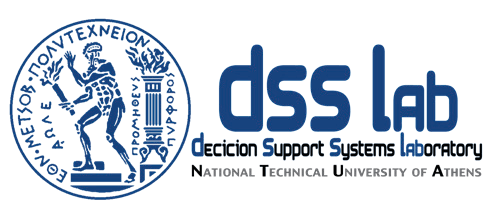National
Open Data
The term Open Data means that data and content can be freely used, modified and shared by anyone for any purpose. Open Data is accessible for everyone and useable without any restrictions. [1]
Open Government Data refers to the wide range of information that public sector bodies collect, produce, reproduce and disseminate while accomplishing their institutional tasks. [2]
Cloud Computing
Cloud Computing is a model that enables ubiquitous access to a shared pool of configurable technological assets available on-demand in a virtualised environment. Cloud services are remotely managed by cloud service providers and can be rapidly provisioned and released with minimal effort or service provider interaction. It can potentially achieve coherence and economies of scale.
The cloud model encompasses the four deployment models Public, Private, Hybrid and Community and the following three delivery models [1]:
Software as a Service
Predictive Analytics
Predictive analytics brings together advanced analytics capabilities. It extracts information from existing data sets in order to determine patterns and predict future impacts and trends. It forecasts what might happen in the future with an acceptable level of reliability, and includes what-if scenarios and risk assessments.[1]
Data analytics encompasses techniques such as regression analysis, pattern matching, forecasting, multivariate statistics, predictive modelling and forecasting. [2]
Next Generation of BI and Data Analytics platforms
Gartner assumes that by 2020 modern BI and analytics platform components will deliver smart, governed, search- and visual-based data discovery capabilities. Natural-language generation and artificial intelligence will be a standard feature of 90% of modern BI platforms and organisations that offer users access to a curated catalogue of internal and external data will realise twice the business value from analytics investments than those that do not. Gartner outlined fifteen critical capabilities by a BI and Analytics Platform [1]:
Machine Learning
By now, the most promising application of artificial intelligence is the use of machine learning as a subfield of AI. The Encyclopaedia Britannica states that machine learning is concerned with the implementation of computer software that can learn autonomously. [1]
Artificial Intelligence
Artificial Intelligence (AI) is a possibility to improve policy and decision making and can be understood as the automation of intelligent and human-like behaviour. The most important techniques to support specific cases of indeed high complex policy making processes are decision support and optimisation techniques, game theory, data and opinion mining, agent-based simulation and visual scenario based evaluations. [1]
Big Data
In 2001, the industry analyst Douglas Laney at Gartner described data management challenges along the three dimensions volumes, velocity and variety in the E-commerce branch. Volumes stands for the quite huge increase of volumes of data, Velocity for increased point-of-interaction speed and the pace of data generated by interactions and used to support interactions. Data Variety means variety of incompatible data formats, non-aligned data structures and inconsistent data semantics. This 3-V-model has been widely used attempting to define big data since this publication in 2001. [1]
Standardisation of processes
<p><span lang="EN-GB" xml:lang="EN-GB" xml:lang="EN-GB"><span><span>Standards require a certain legal basis and binding specifications. At the same time, they must be also accepted by the target group. If standards are enforced, they offer the advantage of planning and investment protection. This provides a good basis for further digitisation of processes.[1] </span></span></span></p>
<p><span><span>As an example, interviewed employees of the administration referred to a nationwide same process for which there are different procedures in all municipalities.In addition, the media interruption...</span></span></p>
Process and resource optimisation
<p><span><span>Public sector has to deliver services to citizens despite resource constraints and budgetary pressures. Because of this personnel and financial limitations, available resources must be used as cost saving and valuable as possible.</span></span></p>
<p><span lang="EN-GB" xml:lang="EN-GB" xml:lang="EN-GB"><span><span>In this context, it is important for public management to reduce bureaucracy and make administrative processes simpler and more efficient. Therefore, any form of unnecessary costs and waste need to be avoided. In order to increase the quality of work, customer...</span></span></span></p>
Cooperative working between decision makers, departments, hierarchy levels
<p><span><span><span>The head of the administration modernisation division on a regional level confirmed that one of the most important needs of public administration is cooperative working. Hierarchy is an important part in public administration but it also represents a limitation for its work. The more complex social problems become, the more complex are the governmental answers to them. Public administrations should be more open and flexible in the cooperation between different stakeholders, partners and hierarchy levels. It is necessary to find a way, in which all partners (inside and...</span></span></span></p>




